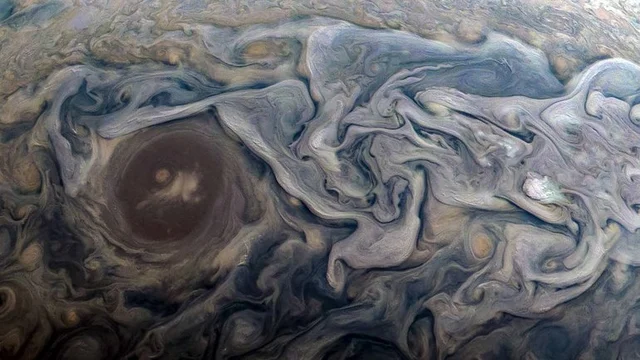11:48 PM Fresh photos from Jupiter look like a view of van Gogh | |
No, it's not Vincent van Gogh's Starry night view, but the curls are convincing enough. Juno galactic setting NASA sent recent photos of Jupiter, in fact that will give us all a post-impressionist feel. Jupiter is quite dramatic, if you zapamatovat about Bolsena Reddish Stain, endless huge storm of a gas giant. This is a fraction of why the steady stream of Juno images from the arrival stage to Jupiter in 2016 was so unusual. Outdoor shots of atmospheric properties in the Northern hemisphere of Jupiter showing the clouds that swirl around the circle in the field of jet stream, called Jet N6. Juno made a copy 8,000 miles from the cloudy peaks during Jupiter's 18th nearest lumen on February 12. The image was enhanced by color and rotated by citizen scientist Kevin M. Gill. In case you're curious about how raw images look when Juno captures them, you'll be able to view and perform with them offline. And during this time you will be able to make some wrapped, star and extra-world inspired art. During the clearance Juno kept all the tools ready when he hovered over the big red Stain in order to qualify, attached to a huge spiral Storm straight for him, and if it has any weight. A total of 32 flights are planned, as a result of this Juno is just starting the second half of its own flights. "We've already rewritten textbooks on how Jupiter's air works, and the difficulty and asymmetry of its magnetic field," said Scott Bolton, a key prospector at Juno, a Southwest research University in San Antonio. "The second middle is obliged to give details that we can apply to clarify our awareness of the depth of Jupiter's zonal winds, the generation of its magnetic field, as well as the structure and evolution of its internal part.” In June, NASA approved for Juno an auxiliary 41 moon presence in orbit to perform its scientific tasks. The task is financed until 2022, when it will end. The task was to learn the origin and evolution of the gas giant, and to guarantee a more thorough understanding of the beginning of our Solar system. This means determining the individuality of the atmosphere and magnetosphere of the planet, the study of such as the planet, the study of magnetic and gravitational fields, the study of the deep structure of Jupiter. | |
|
| |
| Total comments: 0 | |
